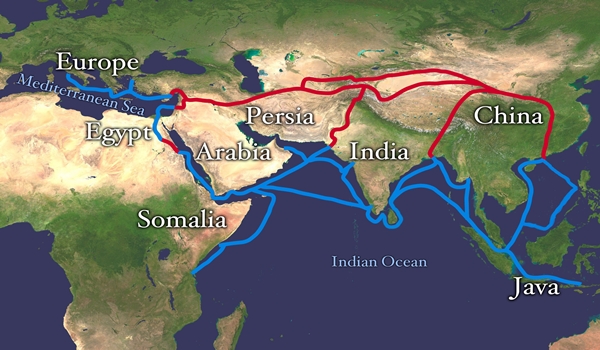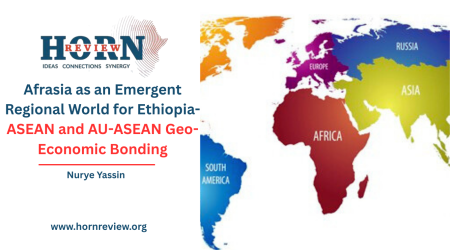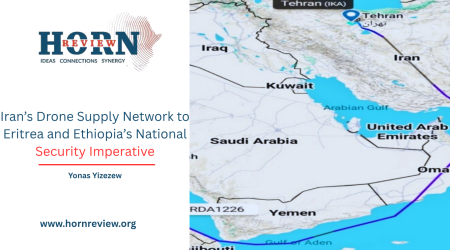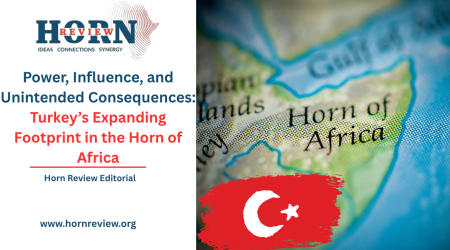
25
Jul
China-Egypt Yuan Settlement: Transforming African Trade Dynamics and the Geopolitics of the Horn
The recent agreement between China and Egypt to conduct bilateral trade and financial transactions in their respective local currencies – particularly privileging the Chinese yuan over the U.S. dollar – marks a significant geopolitical and economic inflection point. This development underscores broader continental trends aimed at de-dollarizing trade and minimizing transactional costs. In Egypt’s case, the shift is complemented by an aggressive expansion of digital payment infrastructure, most notably via UnionPay and fintech integrations, which further consolidate yuan-denominated financial systems within the national economy.
While Egypt moves toward enhanced financial sovereignty, the repercussions for the Horn of Africa – especially Ethiopia – may be destabilizing. Egypt’s strategic maneuver to circumvent the dollar aligns with the broader continental aspiration for currency autonomy, exemplified by initiatives like the Pan-African Payments and Settlement System (PAPSS), which has drastically reduced intra-African transaction costs from highs of 30% to approximately 1%. Egypt’s integration of yuan-clearing mechanisms through Suez Canal-based banks and fintech entities parallels the PAPSS model but with more explicit alignment to Chinese financial architecture.
Ethiopia currently holds an external debt burden of approximately $28 to $30 billion – equivalent to around 18% of GDP – with China standing as its largest bilateral creditor. While multilateral institutions also play a significant role, Chinese loans constitute roughly 25–30% of total external liabilities. These obligations have financed strategic infrastructure: railways, industrial parks, energy projects, and notably the Grand Ethiopian Renaissance Dam (GERD), which alone secured over $1 billion in funding from China’s Exim Bank.
As the yuan becomes a more prominent medium of exchange in regional trade, Ethiopia risks deepening its exposure to Chinese credit facilities. This likely entails further borrowing denominated in yuan or through currency swap arrangements, effectively shifting foreign exchange risk and monetary leverage toward Beijing.
The potential hazards are not theoretical. In other African states, similar debt dynamics have culminated in what analysts refer to as “debt-trap diplomacy.” In Djibouti and Kenya, for instance, infrastructure underwritten by Chinese finance has become a source of strain. In Kenya, concerns have mounted over the fiscal pressure of Chinese loans – particularly those tied to large-scale transport infrastructure like the Standard Gauge Railway. While precise figures vary, analysts warn that debt service ratios are approaching unsustainable levels, intensifying public scrutiny and prompting fiscal recalibration.
Port Infrastructure and Strategic Leverage
Egypt’s economic reorientation consolidates its position as a preeminent continental trade hub, particularly through the Suez Canal Economic Zone, where Chinese investments have surpassed $3 billion and account for up to 40% of total foreign direct investment in recent years. Conversely, Ethiopia remains dependent on more precarious maritime access points – most notably Djibouti’s Doraleh Port, which facilitates over 90% of its trade – and on the Chinese-financed Addis Ababa–Djibouti Railway, its principal commercial lifeline to the sea.
As Egypt accelerates its financial and fintech alignment, regional logistics corridors such as those via Djibouti, Berbera, or Lamu risk being sidelined unless they too are integrated into Chinese-backed financial ecosystems. This evolution increases Ethiopia’s structural vulnerability, as its trade routes become increasingly tethered to yuan-centric payment networks, thereby eroding its capacity to diversify trade access and monetary partners.
Egypt has simultaneously expanded its geopolitical footprint in the Horn of Africa by signing security agreements with Somalia and Eritrea – moves widely interpreted as counterweights to Ethiopia’s influence, particularly in the ongoing GERD dispute. As Egypt deepens its financial and fintech alliances, these networks could easily be converted into instruments of political leverage. Yuan-backed payment infrastructure carries not only economic weight but also geopolitical implications, offering Egypt and China soft power through control of digital rails, transactional data, and cross-border financial settlements.
Ethiopia’s outreach to Somaliland and its efforts to secure maritime access through ports such as Berbera have only intensified Cairo’s strategic countermeasures. Egypt’s alignment with Eritrea and Somalia has deepened, effectively compounding Ethiopia’s regional isolation. Nonetheless, Addis Ababa has begun tentatively exploring bilateral currency arrangements. At the 2024 Forum on China–Africa Cooperation (FOCAC), Ethiopia and China agreed on a birr–yuan exchange framework intended to facilitate trade in local currency – a structure comparable to Ethiopia’s $817 million currency swap with the United Arab Emirates, also concluded in 2024. These arrangements aim to ease foreign exchange shortages, reduce transaction costs, and limit dollar reliance.
However, deeper integration into yuan-based financial systems could compromise Ethiopia’s monetary autonomy. If debt denominated in yuan continues to mount, the management of foreign exchange reserves becomes more complex – particularly given that Ethiopia’s export base, dominated by textiles, agriculture, and leather goods, may not generate sufficient yuan inflows to match its external obligations.
Recommendations & Critical Balance
Ethiopia and other Horn of Africa states must adopt a carefully balanced, multi-track strategy in order to safeguard financial sovereignty and geopolitical agency. Key recommendations include:
- Diversify Strategic Partnerships: Engage robustly with alternative actors – Japan, the European Union, India, and Gulf countries – to reduce overreliance on any single investor or creditor in critical infrastructure sectors.
- Strengthen Regional Financial Systems: Accelerate integration with continental payment frameworks such as PAPSS, and advocate for shared governance structures that ensure operational transparency and neutrality, thereby mitigating overdependence on Chinese-controlled systems.
- Leverage Strategic Geography: Capitalize on Ethiopia’s geostrategic location to negotiate more favorable terms for port access, logistics infrastructure, and digital connectivity. In dealings involving Chinese-financed assets, Ethiopia should insist on technology transfer, capacity-building provisions, and conditional debt relief.
- Institutionalize Fiscal Safeguards: All currency and digital payments agreements should incorporate clauses ensuring data privacy, independent dispute resolution mechanisms not bound to Chinese courts, and provisions to cap the pace of debt accumulation.
A Double-Edged Sword of De-Dollarization
The China–Egypt currency agreement represents a bold recalibration of financial and geopolitical priorities on the African continent. For Egypt, the pivot enhances its regional influence, reduces exposure to the U.S. dollar, and seamlessly integrates with China’s broader Belt and Road ambitions. For Africa more broadly – and for Ethiopia in particular – the model offers potential benefits: reduced trade friction, lowered currency conversion costs, and the creation of alternative settlement mechanisms.
However, the risks are equally profound. Increased reliance on Chinese capital and yuan-based financial systems could erode national sovereignty, exacerbate debt vulnerabilities, and entrench asymmetric dependencies. Egypt’s expanding network of political and financial partnerships across the Horn of Africa poses further challenges to Ethiopia’s strategic positioning and regional aspirations.
Nonetheless, Ethiopia still retains the opportunity to chart a more balanced course. Through prudent diplomacy, diversified financial partnerships, and institutionally robust policy frameworks, it can harness the benefits of financial innovation while preserving long-term autonomy. The challenge lies not in resisting change, but in shaping it to serve national interests.
By Tselot Getachew,Researcher,Horn Review










